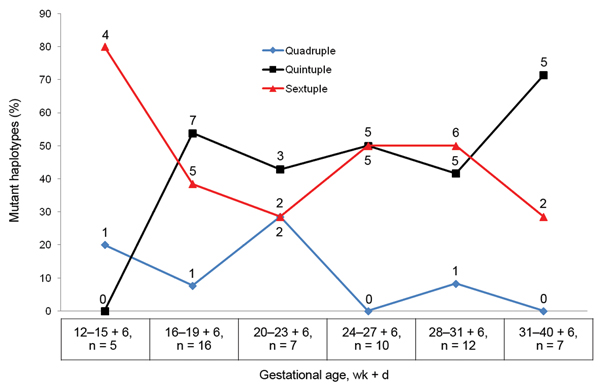Volume 19, Number 9—September 2013
Research
Plasmodium falciparum Mutant Haplotype Infection during Pregnancy Associated with Reduced Birthweight, Tanzania
Figure 2

Figure 2. . . . Proportion of mutant Plasmodium falciparum dihydrofolate reductase and dihydropteroate synthetase haplotypes among pregnant women, Korogwe District, Tanga Region, Tanzania, September 2008–October 2010. Proportions are shown by gestational age; partial weeks are indicated by the number of days. Numbers above and below data points are the number of mutant haplotypes; total numbers (n) are shown below the graph.
1Current affiliation: Mère et Enfant Face aux Infections Tropicales, Paris, France.
Page created: July 23, 2013
Page updated: August 20, 2013
Page reviewed: August 20, 2013
The conclusions, findings, and opinions expressed by authors contributing to this journal do not necessarily reflect the official position of the U.S. Department of Health and Human Services, the Public Health Service, the Centers for Disease Control and Prevention, or the authors' affiliated institutions. Use of trade names is for identification only and does not imply endorsement by any of the groups named above.